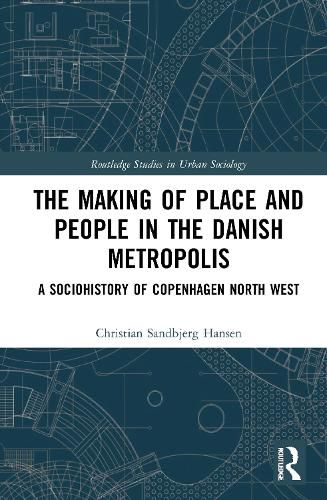Readings Newsletter
Become a Readings Member to make your shopping experience even easier.
Sign in or sign up for free!
You’re not far away from qualifying for FREE standard shipping within Australia
You’ve qualified for FREE standard shipping within Australia
The cart is loading…






This book investigates the sociohistorical making of place and people in Copenhagen from around 1900 to the present day. Drawing inspiration from Pierre Bourdieu’s sociology of social space and symbolic power, and from Loic Wacquant’s hypothesis of advanced marginality and territorial stigmatisation, the book explores the genesis and development of the notorious neighbourhood of Copenhagen North West. As an extraordinary place, the North West provides an illustrative case of Danish welfare and urban history that questions the epitome on inclusive Copenhagen. Through detailed empirical analysis, the book spotlights three angles and entanglements of the social history of this area of Copenhagen: the production of socio-spatial constructions and authoritative categorisations of the neighbourhood, especially by the state and the media; the local social pedagogical interventions and symbolic boundary drawings by welfare agencies in the neighbourhood; and the residents’ subjective experiences of place, social divisions and (dis)honour. In this way, The Making of Place and People in the Danish Metropolis analyses how social, symbolical, and spatial structures dynamically intertwine and contribute to the fashioning of divisions of inequality and marginality in the city over the course of some 125 years. It will appeal to scholars of sociology, urban studies, and urban history, with interests in social welfare.
$9.00 standard shipping within Australia
FREE standard shipping within Australia for orders over $100.00
Express & International shipping calculated at checkout
This book investigates the sociohistorical making of place and people in Copenhagen from around 1900 to the present day. Drawing inspiration from Pierre Bourdieu’s sociology of social space and symbolic power, and from Loic Wacquant’s hypothesis of advanced marginality and territorial stigmatisation, the book explores the genesis and development of the notorious neighbourhood of Copenhagen North West. As an extraordinary place, the North West provides an illustrative case of Danish welfare and urban history that questions the epitome on inclusive Copenhagen. Through detailed empirical analysis, the book spotlights three angles and entanglements of the social history of this area of Copenhagen: the production of socio-spatial constructions and authoritative categorisations of the neighbourhood, especially by the state and the media; the local social pedagogical interventions and symbolic boundary drawings by welfare agencies in the neighbourhood; and the residents’ subjective experiences of place, social divisions and (dis)honour. In this way, The Making of Place and People in the Danish Metropolis analyses how social, symbolical, and spatial structures dynamically intertwine and contribute to the fashioning of divisions of inequality and marginality in the city over the course of some 125 years. It will appeal to scholars of sociology, urban studies, and urban history, with interests in social welfare.